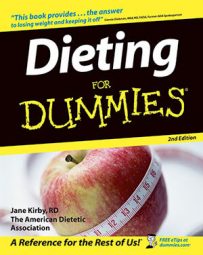If you are on a diet, eating out can mean trouble, but you can be sure that you’re getting a low-calorie meal when you order one. The Food and Drug Administration (FDA) has ruled that all restaurants (including airlines) must demonstrate that special menus comply with the same federal regulations as those used on the labels of packaged foods.
The only difference is that restaurateurs aren’t held to the same grueling standards applied to food manufacturers. They’re not required to do laboratory nutrition analysis — they can use computer programs to do their calculations and show that the menu items are prepared from recipes that comply with the standards. They don’t have to post the nutrient contents of their food, but they must have it available if you ask.
If you see these terms on a menu, they must comply with FDA standards.
Low calorie: It contains 120 calories or less per 100 grams (about 3 1/2 ounces).
Lowfat: It has less than 3 grams of fat per 100 grams.
Low-cholesterol: These items must contain less than 20 milligrams of cholesterol per 100 grams and no more than 2 grams of saturated fat.
Low sodium: It has 140 milligrams or less of sodium per 100 grams.
Light: This means that the item is low in fat or calories. (Restaurants may continue to use the term light as in “Lighter Fare” to mean smaller portions, as long as they make it clear how they’re using the word.)
Healthy: It’s low in fat and saturated fat, has limited amounts of cholesterol and sodium, and provides significant amounts of one or more key nutrients: vitamin A, vitamin C, iron, calcium, protein, and fiber.

